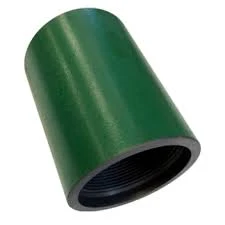- Afrikaans
- Albanian
- Amharic
- Arabic
- Armenian
- Azerbaijani
- Basque
- Belarusian
- Bengali
- Bosnian
- Bulgarian
- Catalan
- Cebuano
- Corsican
- Croatian
- Czech
- Danish
- Dutch
- English
- Esperanto
- Estonian
- Finnish
- French
- Frisian
- Galician
- Georgian
- German
- Greek
- Gujarati
- Haitian Creole
- hausa
- hawaiian
- Hebrew
- Hindi
- Miao
- Hungarian
- Icelandic
- igbo
- Indonesian
- irish
- Italian
- Japanese
- Javanese
- Kannada
- kazakh
- Khmer
- Rwandese
- Korean
- Kurdish
- Kyrgyz
- Lao
- Latin
- Latvian
- Lithuanian
- Luxembourgish
- Macedonian
- Malgashi
- Malay
- Malayalam
- Maltese
- Maori
- Marathi
- Mongolian
- Myanmar
- Nepali
- Norwegian
- Norwegian
- Occitan
- Pashto
- Persian
- Polish
- Portuguese
- Punjabi
- Romanian
- Russian
- Samoan
- Scottish Gaelic
- Serbian
- Sesotho
- Shona
- Sindhi
- Sinhala
- Slovak
- Slovenian
- Somali
- Spanish
- Sundanese
- Swahili
- Swedish
- Tagalog
- Tajik
- Tamil
- Tatar
- Telugu
- Thai
- Turkish
- Turkmen
- Ukrainian
- Urdu
- Uighur
- Uzbek
- Vietnamese
- Welsh
- Bantu
- Yiddish
- Yoruba
- Zulu
perforated pup joints
Understanding Perforated Pup Joints Essential Components in Oil and Gas Operations
In the oil and gas industry, the importance of precise tool and equipment configuration cannot be overstated, particularly when it comes to drilling operations. One of the crucial components that contribute to this precision is the perforated pup joint. Understanding its design, functions, and applications can enhance the efficiency and safety of drilling operations.
What are Perforated Pup Joints?
Perforated pup joints are short lengths of pipe that are equipped with holes or perforations along their length. These perforations can vary in size and number, depending on the specific requirements of the operation. Pup joints serve multiple purposes in drilling and completion activities, including facilitating fluid flow, allowing for pressure monitoring, and enabling the introduction of chemicals or other materials into the wellbore.
Design and Construction
Typically made from high-strength steel, perforated pup joints are designed to withstand significant pressures and harsh environments encountered in oil and gas extraction. The size, thickness, and perforation pattern of these joints can be customized according to the specific needs of a well. Common lengths for pup joints range from 2 to 20 feet; however, customization allows for lengths outside this range if necessary.
The perforation process involves carefully drilling holes into the pipe wall, which can be done either mechanically or using laser technology for precision. The orientation and density of the perforations are engineered to optimize fluid flow and ensure structural integrity, essential for maintaining the joint’s strength under high pressure.
Applications in Oil and Gas Operations
Perforated pup joints are utilized in various stages of the drilling and completion process. One of their primary uses is in the completion phase, where they can be incorporated into well completion assemblies to enhance fluid movement. By allowing produced fluids to enter the pipeline while simultaneously preventing the ingress of formation particulates, these joints play a critical role in maintaining well productivity.
perforated pup joints

Moreover, these joints are also essential in well testing and monitoring operations
. By utilizing perforated pup joints, operators can install pressure gauges or other monitoring equipment more effectively within the wellbore. This allows for real-time data collection regarding pressure changes, fluid composition, and other critical parameters, helping operators make informed decisions regarding production strategies.Additionally, perforated pup joints facilitate the mixing and injection of various substances, such as acids or drilling muds, which may be necessary for specific well treatments. This feature is pertinent in stimulating hydrocarbon production, managing wellbore stability, and addressing issues such as scaling or sour gas.
Advantages of Using Perforated Pup Joints
One of the primary advantages of perforated pup joints is their versatility. Their design allows them to be used in multiple applications, adapting to the unique demands of each specific project. Moreover, the seamless integration of pup joints into existing systems provides operational efficiency by reducing downtime during installation.
Another significant benefit lies in the enhanced safety these joints offer. By facilitating controlled fluid flow and minimizing pressure extremes within the wellbore, they contribute to a safer working environment for personnel while decreasing the risk of equipment failure.
Furthermore, the customization options available for perforated pup joints allow for tailored solutions that can effectively address the challenges presented by varying geological formations and operational demands. This adaptability is key in maximizing productivity and ensuring the longevity of oil and gas wells.
Conclusion
In conclusion, perforated pup joints are an integral component of modern oil and gas operations. Their ability to facilitate fluid flow, enable monitoring, and accommodate chemical injections underscores their critical role in drilling and completion activities. As the industry continues to evolve, the significance of these joints in optimizing production efficiency and ensuring operational safety will undoubtedly grow. Understanding their functions and applications can provide operators with a competitive edge in this dynamic field, ultimately leading to better resource management and improved profitability.
-
Tubing Pup Joints: Essential Components for Oil and Gas OperationsNewsJul.10,2025
-
Pup Joints: Essential Components for Reliable Drilling OperationsNewsJul.10,2025
-
Pipe Couplings: Connecting Your World EfficientlyNewsJul.10,2025
-
Mastering Oilfield Operations with Quality Tubing and CasingNewsJul.10,2025
-
High-Quality Casing Couplings for Every NeedNewsJul.10,2025
-
Boost Your Drilling Efficiency with Premium Crossover Tools & Seating NipplesNewsJul.10,2025







